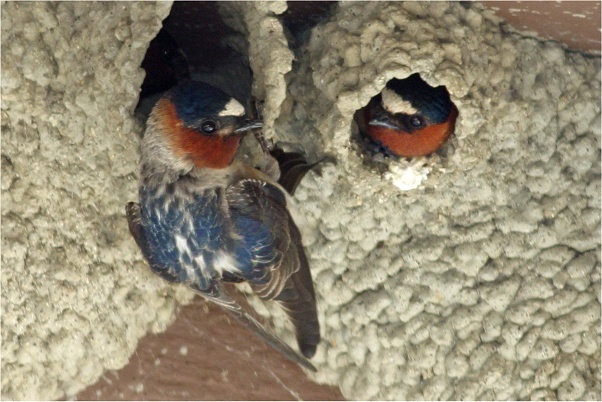
Date: 2004-03-28
Lens: Canon 400mm F5.6

 Cliff Swallow
Petrochelidon pyrrhonota
Cliff Swallow
Petrochelidon pyrrhonota
 Description
DescriptionAs its name implies, Cliff Swallows originally nested on protected cliffs. But the proliferation of manmade structures has allowed this bird to increase its nesting options and range. Many adults will return to the same colony nest site year after year. This is the swallow that returns annually around March 19th to the San Juan Capistrano Mission. The introduction of the House Sparrow, which will steal the nest and destroy eggs, was devastating to this bird.
Blackish or dull steel-blue upperparts, cap, and throat. Buff-white underparts. Pale buff or orange rump and forehead. Sides of its neck are chestnut brown. Tiny black bill. Square edged tail. Sexes similar. Juveniles duller than adults. 5 inches in length.
Open areas near cliffs, bridges, dams, buildings, and other such structures.
 Nesting
Nesting4-6 white eggs. The eggs have a 14-16 day incubation period. Fledging occurs in 21-24 days. The nest is a gourd-shaped mud structure lined with feathers. Nests in colonies under bridges and on sheltered cliff faces.